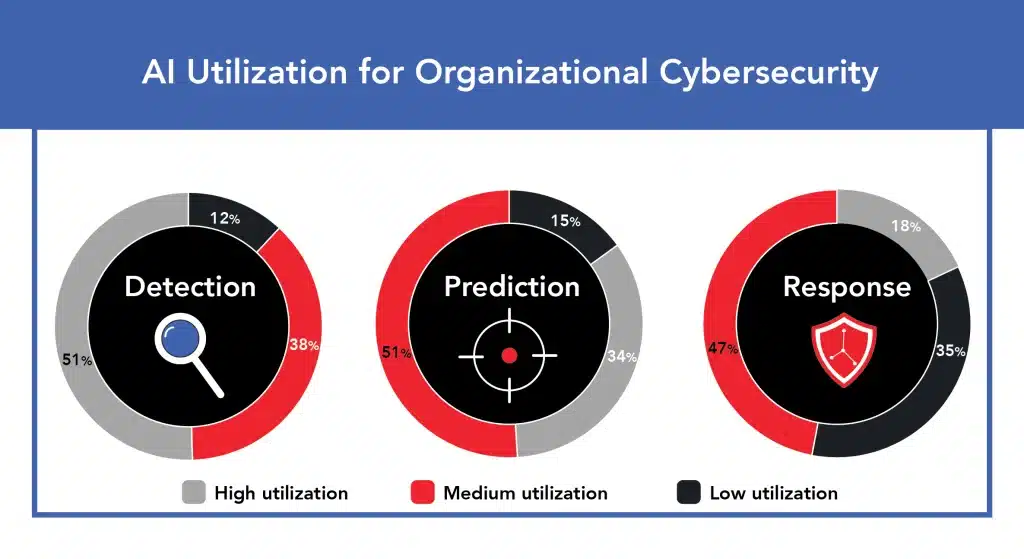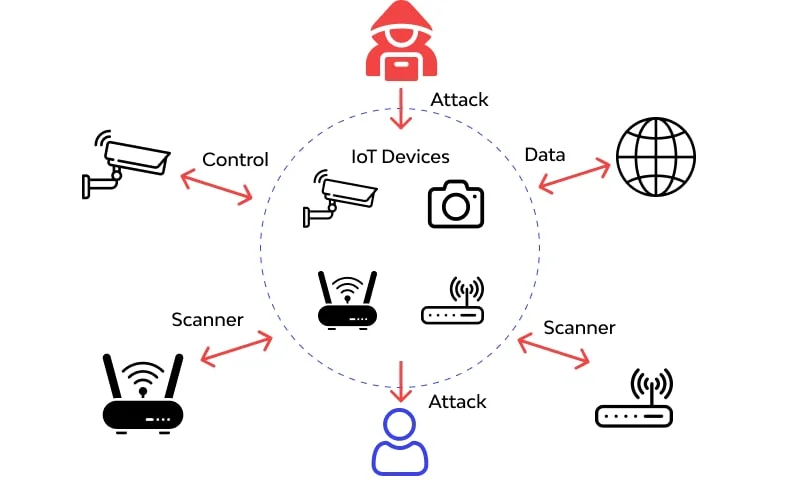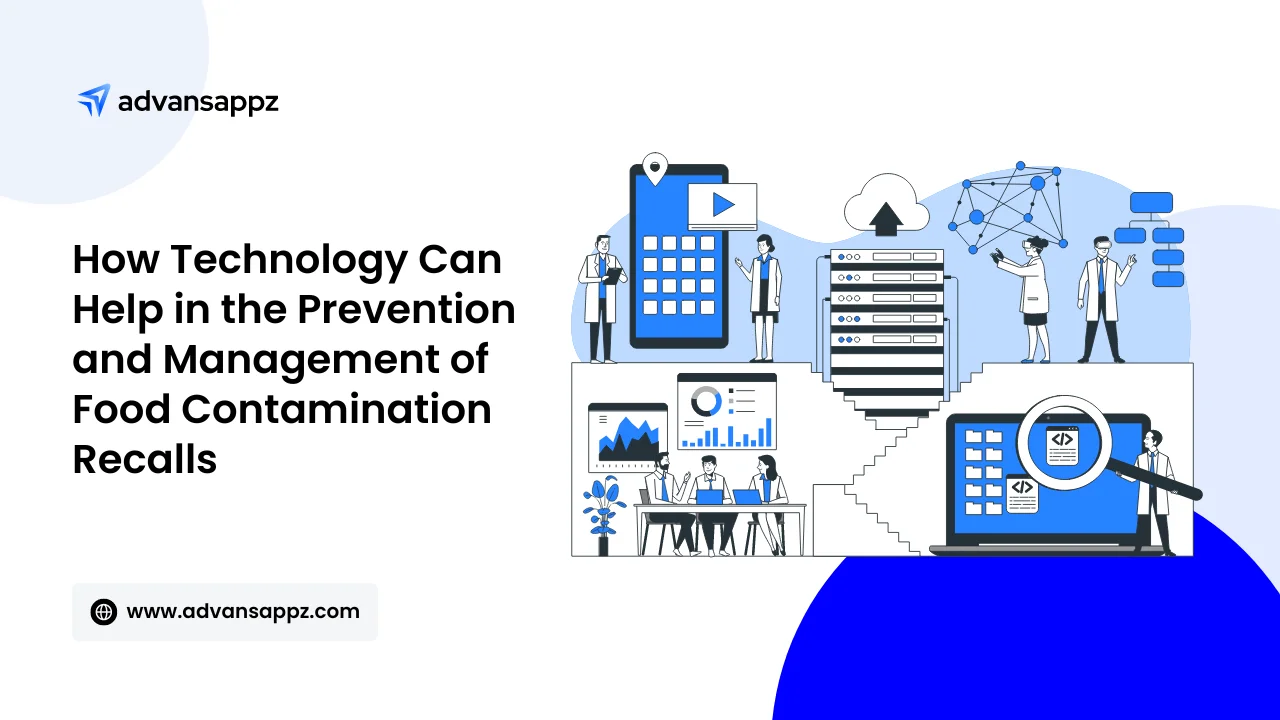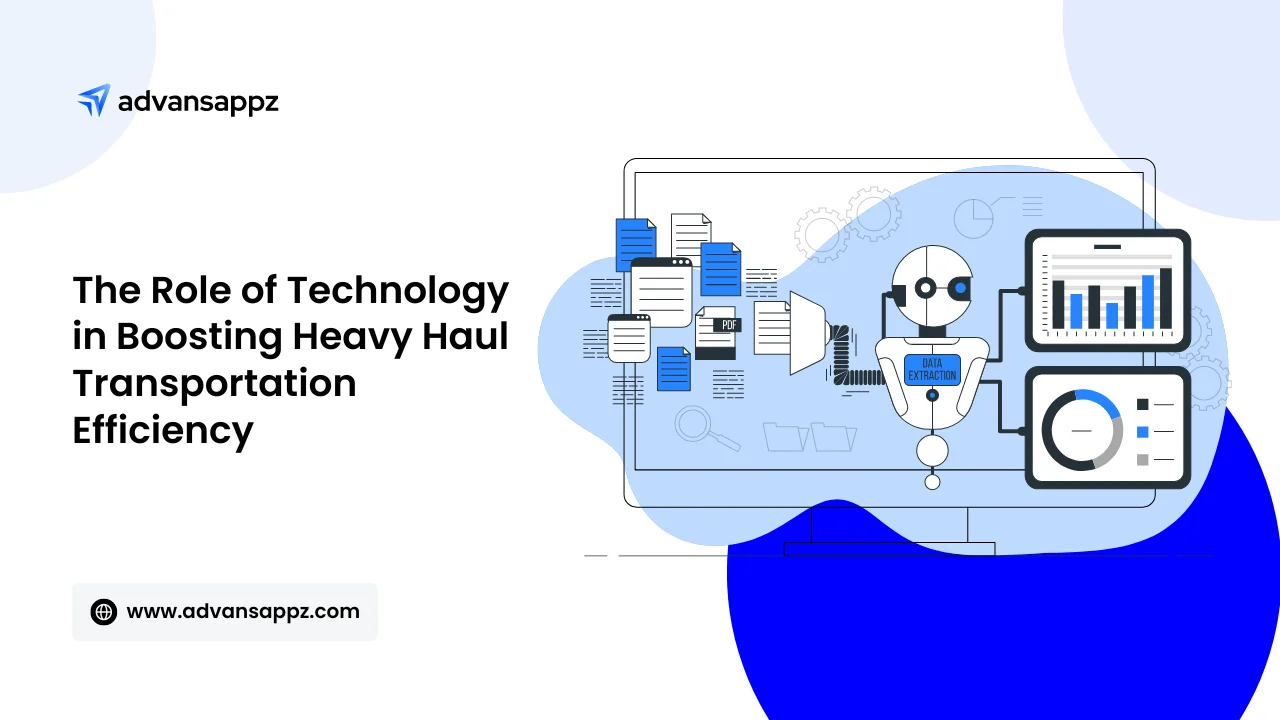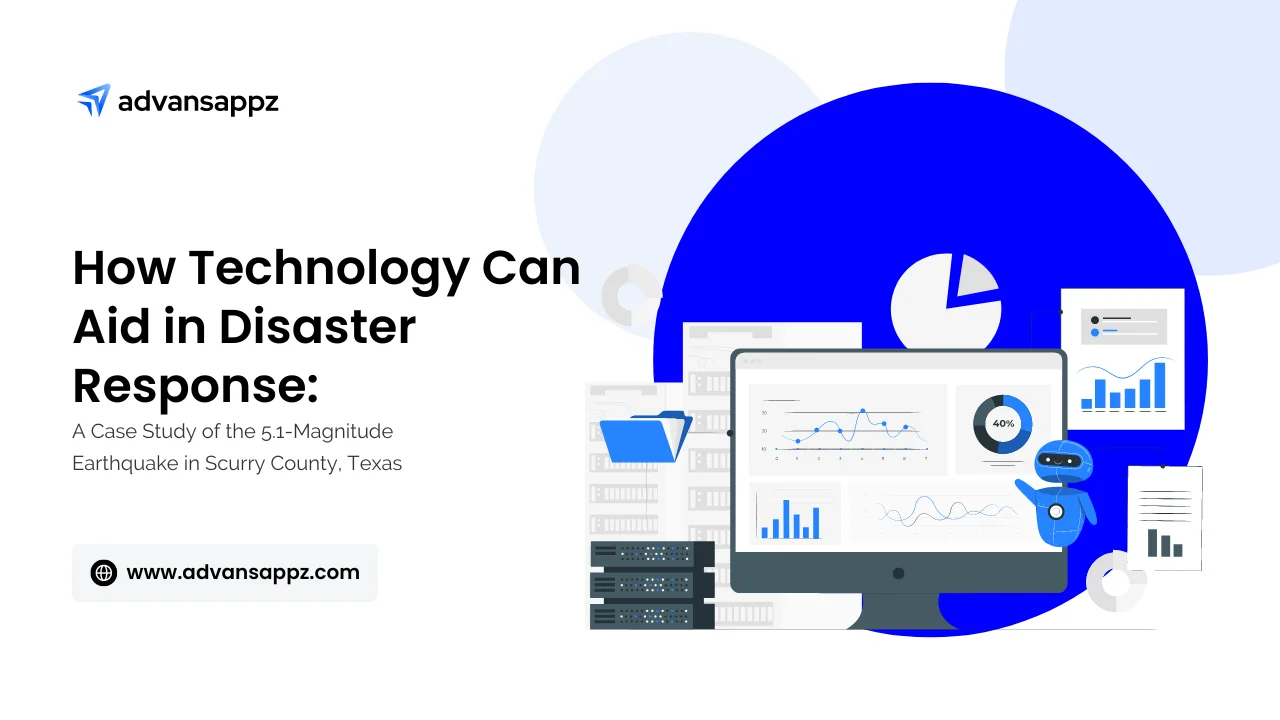As our lives intertwine more with digital threads, cybersecurity trends emerge as beacons, guiding us through the fog of online threats. Amidst a broadening digital dependency, sectors such as healthcare have amplified the clarion call for fortified cybersecurity measures.
Healthcare Industry Cybersecurity: A Glimpse Into Criticality
Within healthcare, cybersecurity threats have escalated, propelling the sector to the forefront of cybersecurity risks. To illustrate, while data breaches average $4.45 million in cost impacts across industries, healthcare hits a peak at $10.93 million, revealing a dire necessity for advanced cybersecurity services.
Embracing this challenge and keeping the trends in cybersecurity aligned, we explore the anticipated cybersecurity trends for 2024.
Pivotal Cybersecurity Trends
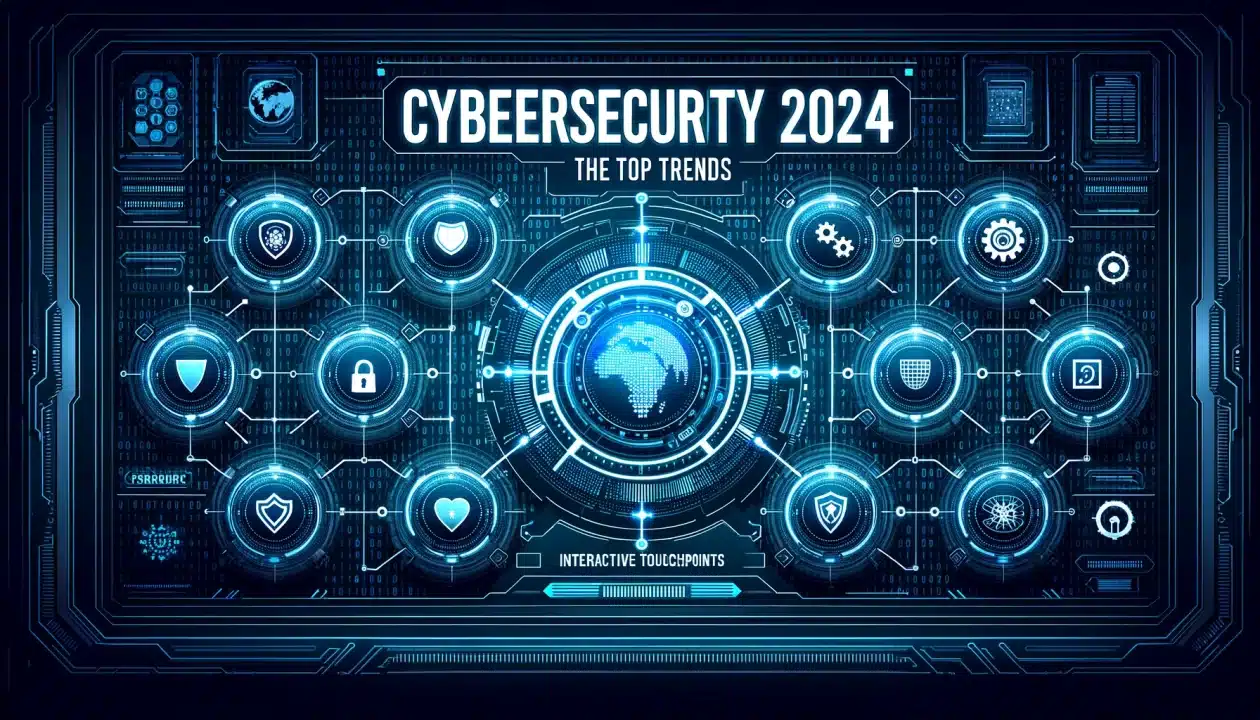
1. The Cyber Security Skills Crunch
The cybersecurity industry needs more experts skilled in addressing cybersecurity threats. Organizations are responding with strategies like boosting salaries and investing in training and development programs to nurture talent capable of handling sophisticated cybersecurity essentials.
Strategic Responses:
- Increased Compensation: To attract and retain cybersecurity talent.
- Enhanced Training: Broadening knowledge to cover emerging malware trends and strategies.
- Development Initiatives: Creating pathways for growth within cybersecurity services.
2. Generative AI Adopted On Both Sides Of The Battle
AI cybersecurity has become a critical component in the digital arms race. Both attackers and defenders harness Artificial Intelligence for enhanced cybersecurity strategies, from creating adaptive malware to developing dynamic defenses like smart authentication and automated incident response.
AI in Action:
- Threat Detection: Utilizing AI to identify new and evolving cybersecurity risks.
- Authentication Measures: Employing AI for more secure access controls.
- Incident Management: Automating responses to cybersecurity threats with AI efficiency.
3. Advanced Phishing Techniques: The Evolving Threat
As malware trends and strategies advance, phishing attacks have become more sophisticated with the aid of generative AI. Organizations must prioritize awareness and education to combat these enhanced cybersecurity threats.
Defense Mechanisms:
- Employee Training: Increasing awareness of cybersecurity essentials to prevent breaches.
- Sophisticated Detection: Employing AI tools to identify and neutralize phishing attempts.
- Culture of Vigilance: Instilling a company-wide proactive stance against cybersecurity risks.
4. Cyber Security In The Board Room
As cybersecurity trends make their way into corporate governance, it’s clear that managing cybersecurity threats is no longer just an IT issue but a boardroom imperative.
Organizations are embedding cybersecurity frameworks into their strategic planning, recognizing the necessity of high-level expertise in navigating cybersecurity risks.
Boardroom Strategies:
- Executive Oversight: Incorporating cybersecurity companies and experts into strategic decision-making.
- Proactive Posture: Leveraging Cisco cybersecurity insights to guide business initiatives.
- Regulatory Compliance: Ensuring adherence to evolving cybersecurity regulations.
5. IoT Cyber Attacks
The proliferation of IoT devices has introduced new vulnerabilities, making IoT cybersecurity a critical concern. The demand for better cybersecurity services to protect these devices is spurred by the shift to remote work and convenient, innovative technology.
Security Measures:
- Standardization: Pushing for robust cybersecurity framework standards in IoT.
- Consumer Awareness: Educating users on the critical cybersecurity essentials.
- Risk Management: Implementing strategies to address and mitigate cybersecurity threats associated with IoT.
6. Cyber Resilience – Beyond Cyber Security
Understanding that not all cybersecurity threats can be prevented, there is a growing emphasis on cyber resilience. Organizations focus on maintaining operations and reducing the impact of attacks, which calls for resilient infrastructure and rapid recovery solutions.
Resilience Building:
- Business Continuity Planning: Developing protocols to sustain critical functions.
- Agile Recovery: Crafting cybersecurity strategies for quick restoration after an incident.
- Ongoing Evaluation: Continuously assessing cybersecurity risks and response capabilities.
7. Less Than Zero Trust
Zero Trust security is no longer a niche concept but a cornerstone of modern cybersecurity strategies. The principle of “never trust, always verify” is crucial as networks extend beyond traditional perimeters, encompassing remote work and IoT devices.
Zero Trust Implementation:
- Continuous Verification: Employing AI cybersecurity tools for real-time monitoring and access control.
- Policy Enforcement: Integrating Cisco cybersecurity policies to manage access across all touchpoints.
- Ecosystem Security: Extending Zero Trust models to protect interconnected cybersecurity services.
8. Cyber Warfare And State-Sponsored Cyber Attacks
With the increasing prevalence of state-sponsored cybersecurity threats, nations are prioritizing the development of cybersecurity frameworks to defend against these incursions. Cyber warfare has become an extension of geopolitical conflicts, necessitating a strategic approach to national cybersecurity.
Strategic Defenses:
- National Frameworks: Establishing cybersecurity essentials for protecting critical infrastructure.
- Collaborative Intelligence: Sharing information between cybersecurity companies and governments.
- Preparedness Drills: Conducting simulations to improve responses to cybersecurity risks.
9. Soft Skills Becoming Increasingly Essential For Cyber Security Professionals
The evolving cybersecurity landscape necessitates not just technical expertise but also soft skills. As cybersecurity threats grow in complexity, professionals must communicate effectively, manage relationships, and solve problems creatively.
Skill Development:
- Interpersonal Communication: Enhancing team and client interactions within cybersecurity services.
- Problem-Solving: Applying innovative strategies to tackle emerging cybersecurity risks.
- Cultural Competence: Building a cybersecurity consultant workforce adept in diverse environments.
10. Cyber Security Regulation
Cybersecurity regulation is becoming a critical part of legislative agendas worldwide as governments seek to protect national interests and economic stability from cybersecurity threats. Compliance with these regulations is not just a legal mandate but also a strategic advantage.
Regulatory Compliance:
- Legal Mandates: Adhering to laws such as the Product Security and Telecommunications Act for cybersecurity essentials.
- Consumer Protection: Ensuring that cybersecurity companies maintain standards to protect user data.
- International Standards: Aligning with global directives like the EU’s Radio Equipment Directive for IoT cybersecurity.
Essential Cybersecurity Hygiene Across All Sectors
Before we draw our discussion of 2024’s cybersecurity trends to a close, it is essential to underscore a universal trend that permeates all industries: the critical importance of comprehensive cybersecurity hygiene. As cyber threats become more sophisticated and pervasive, establishing and maintaining fundamental cybersecurity practices is no longer optional; it’s necessary for survival in the digital space.
Integrating Core Cybersecurity Disciplines:
- Regular System Updates and Patch Management: Ensuring that all systems are up-to-date to protect against known vulnerabilities.
- Proactive Threat Hunting: Vigilant search for potential cybersecurity threats before they can be exploited.
- Comprehensive Training Programs: Empowering employees with knowledge of malware trends and strategies and how to respond appropriately.
Across the board, from startups to multinational corporations, adopting robust cybersecurity measures is the common denominator for defending against a landscape teeming with cybersecurity risks. By highlighting this trend, we reinforce the message that while the specifics of cybersecurity may differ from one sector to another, the underlying principles of good cybersecurity hygiene remain universal.
As we have journeyed through the anticipated cybersecurity trends of 2024, it’s become evident that while technologies and threats evolve, the fundamental tenet of cybersecurity remains constant: proactive and comprehensive defense mechanisms are indispensable. This overarching principle will continue to guide organizations as they navigate the complex and ever-changing cybersecurity landscape.
Strategic Insights: Preparing for the Cybersecurity Horizon
As we approach the end of our exploration of the 10 Biggest Cybersecurity Trends in 2024, we must synthesize the insights garnered and look at how these trends will shape the cybersecurity landscape for all industries. This reflection not only heightens our awareness of the challenges but also sharpens our focus on the opportunities for innovation and collaboration across sectors.
Within the digital tapestry of threats and defenses, specific key takeaways emerge as critical guideposts for organizations to consider as they plot their cybersecurity strategies for 2024 and beyond:
- Adaptive AI Utilization: Incorporating AI in cybersecurity is inevitable and beneficial but requires constant vigilance to protect against AI-powered cybersecurity threats.
- Talent Development and Retention: Combat the cybersecurity skills crunch by not only offering competitive remuneration but also focusing on career development and continuous learning to retain top talent.
- Comprehensive Cybersecurity Protocols: It’s essential to develop a versatile cybersecurity framework that aligns with the nuanced needs of different industries yet maintains high universal standards.
This is designed to encapsulate the pivotal insights that apply broadly across various sectors. Whether it’s healthcare, finance, retail, or critical infrastructure, these takeaways are the threads that weave a robust defensive posture against the sophisticated cybersecurity threats of tomorrow.
With these reflections, organizations are better equipped not only to anticipate the direction of cyber threats but to actively engage in defining their cybersecurity destiny. As we segue into the provided concluding remarks, let us carry forward the understanding that cybersecurity is not a static battlefield but a landscape of evolving challenges and innovations.
Read more:- Cybersecurity Trends to Watch in 2023
In the End
The cybersecurity landscape of 2024 unfolds with complex challenges, and advansappz stands ready to guide industries through them. Embodying resilience and foresight, it not only anticipates but also shapes the future of digital safety. As these ten pivotal trends evolve, our dedication to innovation and protection offers the clarity and confidence to secure a safer digital horizon.
Frequently Asked Questions
Some anticipated threats include AI-driven attacks, ransomware targeting IoT devices, and increased supply chain vulnerabilities.
Businesses can stay prepared by implementing robust security measures, investing in AI-driven threat detection, and regularly updating their cybersecurity protocols.
AI and machine learning will be crucial in identifying and mitigating cyber threats, enhancing security operations, and automating incident response processes.
Employee cybersecurity training remains critical in creating a security-conscious culture, preventing social engineering attacks, and minimizing the risk of human error-related breaches.
